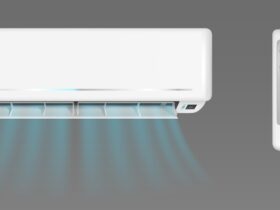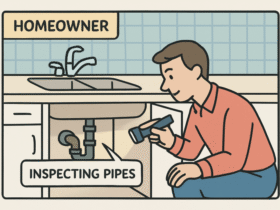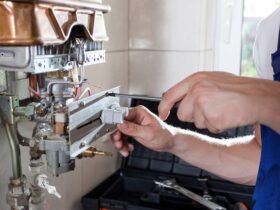Winter doesn’t exactly sneak in quietly. It grinds in like a snowplough on gravel. And while it might look serene from the couch, sipping something warm while the frost settles outside, your home is out there bearing the brunt of it, board by board and brick by brick.
Like any good roof, preparation works best when it’s layered, consistent, and done before the storm hits. And when budgets are tight, smart upkeep matters more than ever. So, here are six winter-prep strategies that won’t flatten your finances.
1. Start at the top—literally
Your roof is the first to take a beating, and the last place you want to discover a fault when it’s snowing sideways. Whether you’re working with Salt Lake City roofers
or a construction company in Colorado Springs, even the best-built roof is only as good as its weakest tile. Small cracks, lifted shingles, and loose flashing might not seem urgent on a sunny day. However, give them a snow load and a freeze-thaw cycle, and you’ve got water tracking where it shouldn’t.
If you’re not keen on climbing ladders in your weekend best, many pros offer inspections that catch issues before they turn into mould, rot, or mid-winter misery. A patch in dry weather is cheap. A patch when it’s -2 and snow’s coming in sideways? Not so much.
2. Seal the small stuff, as it’s where heat leaks out
Homes lose heat the same way old sheds lose tools: quietly, one small gap at a time. Door frames that don’t quite close flush. Window corners where the caulking gave up in 2015. Vents, outlets, and even pet doors can all leak air like a poorly installed skylight.
Weather stripping, rope caulk, and a steady afternoon of your time can make a huge difference. It’s less about perfection and more about plugging the obvious holes before your heater starts working overtime to heat the street.
3. Give windows a second skin
If you don’t have double glazing, there’s still a lot you can do to stop heat escaping through glass. Shrink-wrap window film turns a single-pane window into a makeshift double. At ten to fifteen bucks a pop, it’s about as low-cost as insulation gets.
While you’re at it, curtains matter. Heavy, lined ones, especially those that touch the floor, act like thermal blankets for your glass. If that sounds too close to grandma’s parlour, thermal roller blinds offer the same effect without the frills.
4. Wrap your pipes before the frost does
Think of your plumbing like roof trusses: out of sight until the moment they fail. A burst pipe doesn’t knock politely. It floods. Exposed pipes under sinks, along exterior walls, or in crawlspaces are most at risk. Wrapping them in foam insulation is a five-minute fix with five-figure potential if ignored.
And don’t skip the outdoor taps. Disconnect hoses. Shut off the interior valves. Let the water drain. Otherwise, they’ll freeze, split, and quietly make themselves known mid-January, when everything’s frozen except the slow leak in your wall.
5. Furnace filters: the gutter guards of your heating system
Much like leaves clogging a downspout, dirty furnace filters block the flow. Your heating system ends up doing more work to push less air, costing more to run while heating less of the house.
Swapping out filters every 1–3 months during heavy use is good maintenance. The filters are cheap. A worn-out blower motor isn’t. And if your system’s been wheezing along for years, a quick clean of the vents and a glance at the thermostat settings won’t hurt either.
6. Use what you’ve got, but better
Sometimes winter prep is less about adding and more about adjusting. Try reversing ceiling fans to push warm air down, laying down door snakes to block draughts under old timber doors, or moving furniture away from heating vents, so the warmth gets into the room more effectively.
These aren’t upgrades, they’re repositioning what’s already working. Just like shifting the angle of a solar panel or redirecting a downpipe, they entail little to no cost, just a bit of time and a willingness to fuss over the details.
You don’t need to gut the house or fit out the place with smart tech to get through winter comfortably. Most of what makes a home winter-ready is maintenance, not magic. Fix what’s failing, insulate what’s exposed, seal what’s leaking. That’s the kind of layered, leak-proof thinking that gets roofs through storms and homes through winter.







